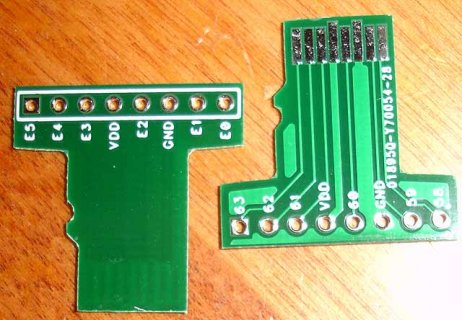Something odd with ILI9341 on my T_3.5 - Odd in that it won't work to run example/graphicstest?
Compile for T_3.6 using some private ILI9341_t3.h and it works, recompile for T-3.5 and it uploads and the USB out shows, but the display is white.
Compile for T_3.6 using KurtE ILI9341_t3n.h (with SPIN) and it works, recompile for T-3.5 and it uploads and the USB out shows, but the display is white.
This is true on T_3.6 PROTO and beta3 board using the proper version of this line for SPI0 ::
ILI9341_t3 tft = ILI9341_t3(10, 20, 255, 11, 14, 12);
ILI9341_t3n tft = ILI9341_t3n(10, 20, 255, 11, 14, 12);
Is there some subtle difference I don't know about with SPI0 and T_3.5 .vs. T_3.6?
All three units are like the PROTO with top side female headers. I have an ADAFRUIT PermaProto with bottom pins and top sockets that I can wire into and then as a unit plug to each of these devices.
I'm using a 2.4" TOUCH ILI9341 but actually started this to test a new 2.2" ILI9341 that worked on the T_3.6's. Neither sketch is anything but white on the T_3.5?
I just moved SCK from 14 to 13 and recompiled on T_3.5, I do see the LED blinking as expected, but still a white display? The T_3.6 is running the 2.2" ILI9341 now on the same SCK=13 sketch.
After soldering this is the first of anything plugged into the T_3.5, and I'm using the same uncoated wood pencil to press the program button on both of the KS Beta boards. I just scanned the solder on the bottom of the T_3.5 - nice clean and shiny, unlike the hazy ick on the T_3.6. There are wires in the headers for the Serial Loop Through, but they are the same on both with no serial pin conflicts.
Once I see this work I'll wire the SD CARD SPI on the 2.2" ILI9341.



